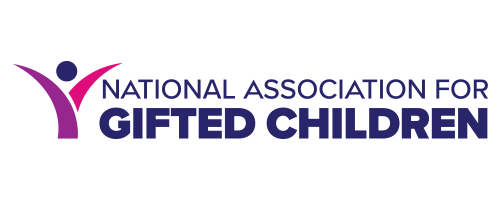NAGC Public Policy Update - Week of April 14
By Kuna Tavalin, Public Policy Advisor, Stride Policy Solutions
Report Finds Millions of Students Left with No Civil Rights Protections
Senator Bernie Sanders (I-VT), Ranking Member on the Senate Health, Education, Labor and Pensions (HELP) Committee released a report highlighting the impacts of recent firings at the U.S. Department of Education Office for Civil Rights (OCR) on students who rely on OCR to carry out statutory requirements to investigate and protect their civil rights. According to the report, after actions taken by Secretary of Education Linda McMahon to eliminate over 240 positions and close more than half of OCR’s regional offices, more than 46 million students in 27 States and territories have been left without civil rights investigators to investigate their complaints; and, OCR political appointees have not provided any public communications to students or families about the plan to resolve their open cases. Data provided shows that fired staff were working on 6,896 cases, leaving thousands of students in potentially unsafe learning environments—or out of school entirely—and without any clear plan for resolution, caseloads for remaining investigators are expected to increase by more than 200 percent.
Read the report here.
LPI Mapping Tool Shows Public/Private School Distribution
Using data from the National Center for Education Statistics (NCES), the Learning Policy Institute (LPI) has developed a mapping tool to analyze how public and private schools are distributed across each state. Examining this geographic distribution provides insights into where school vouchers (also known as tax-credit scholarships, universal school choice, or education savings accounts) are, or will be, concentrated. As of January 2025, 34 states have implemented policies enabling parents to use vouchers to cover expenses at non-public schools. Congress is currently considering the Educational Choice for Children Act as part of a budget reconciliation package. That bill would provide a 100 percent tax credit for funds donated to scholarship-granting organizations, which could provide scholarships to families making up to three times the area median gross income.
Access the tool here.
All4Ed Brief Explains Secretary’s ESEA Waiver Authority
The Alliance for Excellent Education (All4Ed) and Education First have developed ESEA Waivers 101, a brief to help the field understand the authority of the Secretary of the U.S. Department of Education to grant Elementary and Secondary Education Act (ESEA) waivers. Title VIII allows the Secretary to issue waivers within certain legal limitations. According to Anne Hyslop, All4Ed Director of Policy Development, “...there is a lot of speculation over whether certain states intend to seek waivers and how the Trump administration could use the waiver authority to dismantle critical safeguards within federal policy (e.g., ESSA’s requirements for assessments, accountability, and reporting, as well as its fiscal rules and formulas).” The ESEA Waiver 101 brief explains what can and cannot be done without a waiver, which requirements cannot be waived, and what the request process entails.
Download ESEA Waiver 101 here.
ED Requires States to Certify Adherence to Anti-DEI Priorities or Lose Title I funds
On April 3, the U.S. Department of Education (ED) issued a letter to State Commissioners responsible for K-12 State Education Agencies (SEAs), instructing them to certify compliance with the Administration’s policies regarding diversity, equity and inclusion (DEI) as a condition of continuing to receive federal education formula funding available under Title I of the Elementary and Secondary Education Act. ED warned that Title I funding—aimed at schools serving low-income students—would be withheld unless officials complied with the directive. The memo requires state and local officials to sign and submit a certification letter within 10 days, despite the lack of clarity from the Administration about which programs breach its interpretation of civil rights laws, as well as an ongoing lawsuit challenging the policy’s legal credibility.
Read the certification memo here.
ED Issues Guidance on Parental Rights
A Dear Colleague letter was sent on March 28th by Frank E. Miller, Jr., Acting Director of the Student Privacy Policy Office (SPPO) notifying Chief State School Officers and Superintendents of their legal obligations under the Family Educational Rights and Privacy Act (FERPA) and Protection of Pupil Rights Amendment (PPRA). The SPPO letter lists several areas of concern: parental right to inspect education records, safety of students, annual notification rights, military recruitment, and assurance of compliance. The letter indicates that some school or state policies might conflict with FERPA provisions that permit parents to review their children's records. It emphasizes that schools creating "Gender Plans" for students must allow parents to inspect or review those documents. Additionally, SPPO guidance advises school administrators not to withhold information from parents if it identifies another student who has made death threats against their child. While parents of both students have the right to see this information, schools must avoid sharing disciplinary details unless directly relevant to both students. Schools may inform parents that measures are being implemented and can take steps to ensure student safety. Finally, the guidance reminds schools to notify parents of their rights and to provide military recruiters with greater access to student information unless parents opt out.
Access the guidance letter here.


